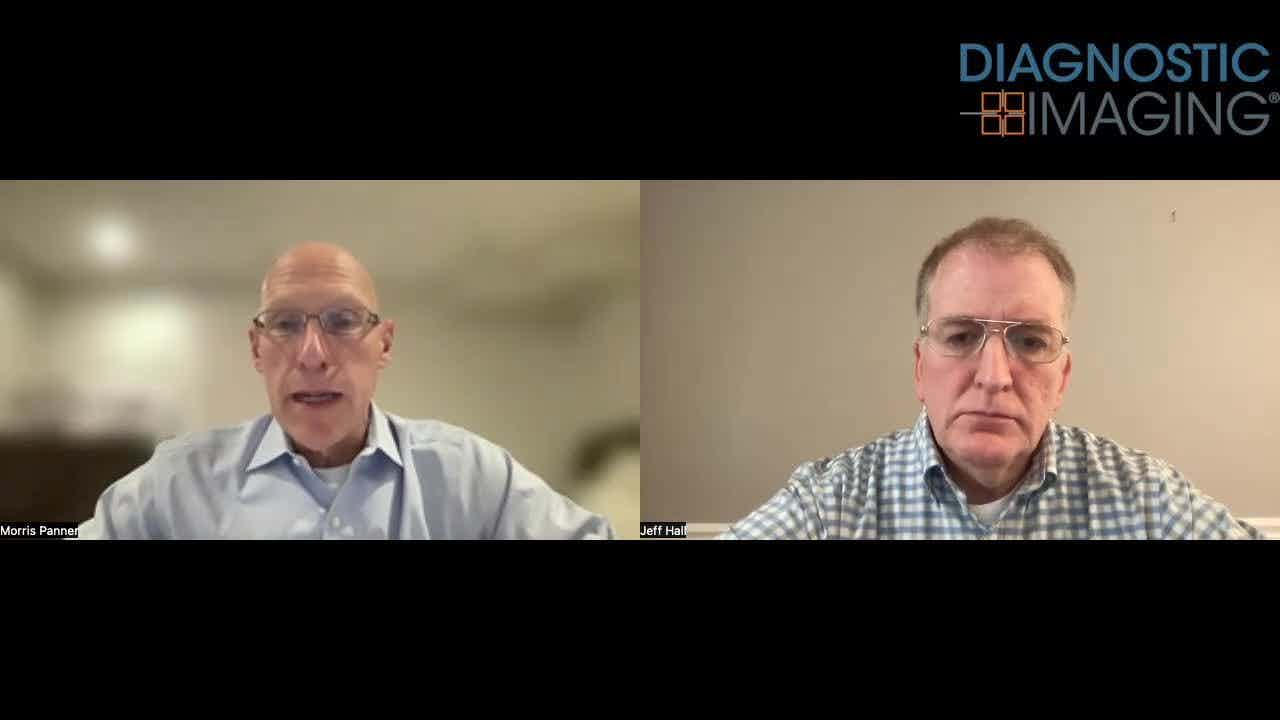Quality structure builds high-performance groups
The imaging center opened on schedule, but the group soon noticed a decline in revenue from its main hospital site. Upon investigation, the management team discovered a new problem in the hospital demographic download and reported that two payers were denying nearly all claims following the change to formats compliant with the Health Insurance Portability and Accountability Act. The problems were corrected but resulted in three months of decreased revenue just at the time the new imaging center-and a newly hired radiologist-increased costs. The physician partners took a deep breath and discussed the likelihood of no bonuses for the rest of the year.
It is probably safe to assert that most radiology practices would prefer a "peak performance" environment over one in which they are not appropriately compensated for the work they perform. It is not unusual, however, for a radiology group to begin looking at its business operations only when physician income declines or remains flat while the volume of work increases. It is also fairly common for practice managers to excel at fire-fighting, where the focus of activity moves from resolving one crisis to tackling another. In these cases, the level of fatigue and frustration is high, and the desire to develop proactive programs fades under the reality of the crisis of the week.
Radiology became a business during the era when radiologists began billing their own professional component fees. And to hear the legends of that time, life was good. The physicians mailed a bill and the new billing/accounting/personal secretary staff member posted the payment. In all likelihood, this person was hired from the hospital radiology department because of being a hard worker who got along well with the physicians. How hard could it be?
Many of those early staff members went on to manage large practices. If they didn't seek additional formal education, they were adept at learning and enjoyed a challenge. They learned the complexities of contracting and billing managed-care companies, as well as working within a framework where the rules for getting paid seemed to change daily.
At some point, radiology groups began to recognize that they were running multimillion-dollar businesses. The executive-level manager then emerged, usually hired because of his or her education or success in business management in another industry.
Along the way, the dance of declining reimbursement and increased service demands also developed. Competition in the hospital market changed the tone of hospital-group relationships, while subspecialization in radiology introduced new opportunities and challenges. Imaging center management demanded a "retail" approach far different from that of hospital staffing, and referring specialties began to identify radiology as a source of new revenue.
How hard can it be? The business environment for radiology is intensely complex and demanding. The relatively high production levels of today's radiologists have managed to keep income at an attractive level overall, but the expectations of new recruits completing fellowships are high, and groups are taking a more critical look at the effectiveness of their business functions.
The quality approaches discussed in this article were developed for the manufacturing industry when the U.S. faced the reality of global competitiveness. When radiology is broken down into a series of processes, it closely resembles a manufacturing environment. The quality of the radiologist may be supreme, and yet his or her reputation can be affected by poor report turnaround, scheduling delays, and support staff inefficiencies. Market perception in this case would state that the quality of radiology services in this facility is poor.
High-quality service requires balance and consistency in the various elements, so the quality approach needs to reflect the achievement of balance. This will become more evident as we discuss the elements of the Malcolm Baldrige Health Care Criteria for Performance Excellence, the balanced scorecard concept, and the Six Sigma improvement processes. Numerous books have been written on each of these topics, so our review will be cursory, but it will provide specific examples applicable to radiology.
MALCOLM BALDRIGE PROGRAM
The Baldrige National Quality Program was developed in 1987 for business and manufacturing and later modified for education and healthcare. While the 84-page booklet outlining the program can initially be intimidating, much of the material provides examples and questions to guide a potential applicant through the process. Those undertaking the Baldrige quality journey soon realize that the program is not a quick fix that can be implemented equally well on all fronts. Rather, it will require a consistent commitment.
As a performance excellence framework, however, the Baldrige criteria offer a structured approach to implementing a formal quality program. Major categories include:
- Leadership. The issue of leadership in radiology practices becomes more critical as a group grows in size and complexity. Convenient conversations across the reading room must be replaced by more formal mechanisms to ensure that the culture and values of the group are communicated to new associates. In addition, this section addresses the effectiveness of decision-making processes that also must become more formal with growth. Even if a group is not growing in size, the assimilation of new physicians who often have different values and priorities from those of the old guard makes this an important issue.
- Strategic planning. Formal planning provides structure and process. Organizations that exercise discipline in this area are more successful at managing growth and change than those that do not. Plan development tends to reduce market-reactive behavior, improves the group's perception of environmental control, and focuses resources (financial, time and personnel).
- Focus on patients, other customers, and markets. While outpatient imaging centers are likely to have a customer focus, how many radiology groups perceive the hospital to be their largest "customer"? While it is true that hospitals and insurance plans may represent the evil empire, they are also critical to the success of the group. Repositioning them as customers can reveal surprising opportunities that make life easier and more financially rewarding.
- Measurement, analysis, and knowledge management. A long-held management precept states, "You can't manage what you can't measure." Overall, the business of radiology has done an amazing job of managing by gut instinct and anecdotal evidence. But moving to a higher level of performance will require data-driven decision-making. This increases the importance of the group's practice management computer system, the ability to capture relevant data, and the staff's ability to "peel the onion" with appropriate analysis.
- Staff focus. Radiology business offices traditionally hired minimally trained employees, provided on-the-job training, and kept people in tightly defined job descriptions. The staff "stars" demonstrated an ability to take on additional work, learn new positions, and cross-train themselves to improve their value. They often progressed to a management position and learned through their own initiative. Many of these people are unprepared for their current job demands-especially as practices begin to recognize the value of data-driven decision-making. Without an investment in bringing staff expertise to a higher level, all the good intentions (and radiologist education) in the world will not overcome what is often a sweatshop mentality in billing offices.
- Organizational performance results. Competing for a Baldrige award means demonstrating that you have not only deployed the appropriate programs and initiatives but have achieved measurable results. Probably the most difficult aspect of this task lies in the lack of industry information for comparison, and until radiology advances in this area, there may not be a national Baldrige winner in the specialty. Performance results must be demonstrated in the following areas:
-healthcare results;
-patient- and other customer-focused;
-financial and market results;
-staff and work systems;
-organizational effectiveness; and
-governance and social responsibility.
While the Baldrige criteria represent the most complex operational challenge of the approaches discussed, they provide a viable framework for development of a performance improvement structure. The National Institute of Standards and Technology Web site (www.nist.gov) offers a range of self-assessment tools and guidance for getting started.
BALANCED SCORECARD
The balanced scorecard is an approach developed in the early 1990s at Harvard Business School. Like the Malcolm Baldrige criteria, the balanced scorecard emphasizes management by fact and data-driven decision-making. While the approach is somewhat different, the balanced scorecard offers a complementary focus for the Baldrige criteria in providing a broadened scope in which to measure the health of a practice.
Radiology practices, like many other businesses, are usually measured primarily by financial indicators. While the balanced scorecard certainly does not ignore financial indicators, it identifies three other perspectives that should be considered to achieve a total management system:
- The customer. The group must define internal and external customers and document and agree upon the desired outcome for each customer group. Imaging centers, for example, cater primarily to referring physicians and their patients as customers. If the service quality or turnaround time for your center is poor, patients probably can go down the street to a competitor. The focus can then be narrowed to the experience of one customer at a time-all the while envisioning what a delighted customer would look like to the group and what benefits the imaging center can gain from truly excellent customer service.
- Internal processes. This perspective examines the inner workings of the business, including steps that might be taken to improve the operational aspects of the practice or imaging center. A checklist can be determined by physically completing a walk-through and flowcharting processes from patient registration to the time the claim is resolved. Internal process improvement areas may not be obvious to those who work in the center on a daily basis, so an outside objective person could be used for the walk-through and for employee interviews to identify barriers employees face. Once the baseline assessment has been done, the more glaring internal process errors can be identified and ranked in order of priority for improvement.
- Learning and growth. In this case, learning and growth applies to both radiologists and office staff and can encompass corporate compliance, coding, state and federal regulations, and risk management, at a minimum.
- Financial. This area is likely to be the most familiar to practice managers and radiologists. Financial indicators for radiology would include measurements such as procedure volume, collections, and gross and net collections percentages.
SIX SIGMA
Do you have to be certified as a Six Sigma black belt to use the program's processes? While there is no doubt that formal training would help organize improvement projects, the basic principles can be adopted as part of the framework for performance improvement.
To put Six Sigma in perspective, its developers tell us the following:
We don't know what we don't know; we can't do what we don't know; we won't know until we measure; we don't measure what we don't value; and we don't value what we don't measure (Mikel H, Shroeder R, Six Sigma, New York: Doubleday/Random House, 2000).
These statements place improvement efforts squarely in the middle of data-driven decision-making once again, so Six Sigma offers a structured process to function within either of the previously discussed management frameworks. The great caution for the beginner using a Six Sigma approach is to not react prematurely to the first layer of information-the normal "kill the messenger" response of a reactive radiology practice. In addition, unless the practice management system can provide flexible, responsive reports, it can be difficult to quantify the scope of a problem. A brief example follows (and assumes measurement is possible):
- Define. The practice manager determines that net collections exceeded net charges several times during the year.
- Measure. Each time this pattern occurred, the group indeed collected more revenue than normal, but adjustments were out of proportion for those months compared with other months.
- Analyze. A report of adjustment classifications reveals that MR angiography procedures are being denied for medical necessity. Management notes that correction of this problem would have the greatest impact in improving claims denials, and a further level of analysis identifies one referring office as the primary culprit.
- Improve. The group prepares educational information about the appropriate ordering of MRA exams and meets with the office staff to explain collection of information to be communicated when the studies are ordered. After discussing the procedures with the referring physician and her office staff, the radiology group learns that the physician is ordering appropriately, but the staff is not providing sufficient information to justify the procedure. The staff agrees to provide more thorough information.
- Control. The quality of information improves during the first two months, but as measurement continues, the radiology group again notices an increase in medical necessity denials. The marketing representative notes that there has been staff turnover at the front desk and arranges to meet with the new staff member.
The diagram shows that the process is designed to be a continuous cycle of review and correction, with the goal of control, or a process that does not vary in consistency.
FINAL WORD
The various methodologies or management concepts will vary with the goals, personality, size, structure, and resources of the radiology practice. They will work individually or can be combined and overlapped, which we have found to be effective in strategic planning and in identifying priority projects. Performance improvement is more than a project or initiative. It is a way of life and perhaps only a new way of doing what you are already doing. Data-driven decision-making is critical in each of the approaches and again brings to mind the truism "You can't manage what you can't measure."
This article is the third in a series examining performance improvement in the radiology practice setting.
Ms. Kroken and Dr. Carmody are principals in Healthcare Resource Providers in Albuquerque, Ms. Kroken is a former past president of the Radiology Business Management Association and a fellow in the American College of Medical Practice Executives. Dr. Carmody is board-certified in diagnostic radiology and nuclear medicine and has been involved in various aspects of practice management for more than 25 years. Ms. Amann is operations manager for Radiology Consultants of North Dallas.
Ms. Kroken has received honoraria from the RBMA and is a member of its speakers' bureau.
New Collaboration Offers Promise of Automating Prior Authorizations in Radiology with AI
March 26th 2025In addition to a variety of tools to promote radiology workflow efficiencies, the integration of the Gravity AI tools into the PowerServer RIS platform may reduce time-consuming prior authorizations to minutes for completion.
The Reading Room: Artificial Intelligence: What RSNA 2020 Offered, and What 2021 Could Bring
December 5th 2020Nina Kottler, M.D., chief medical officer of AI at Radiology Partners, discusses, during RSNA 2020, what new developments the annual meeting provided about these technologies, sessions to access, and what to expect in the coming year.










